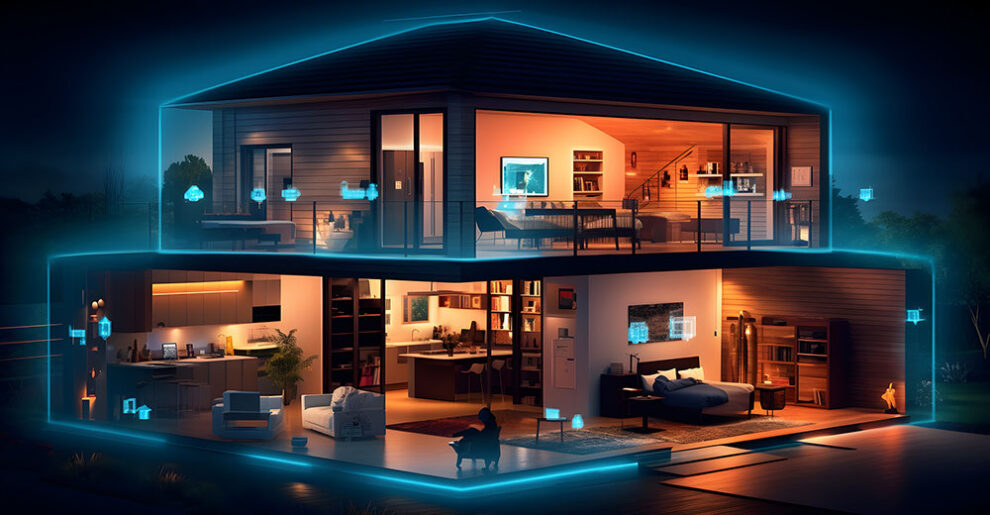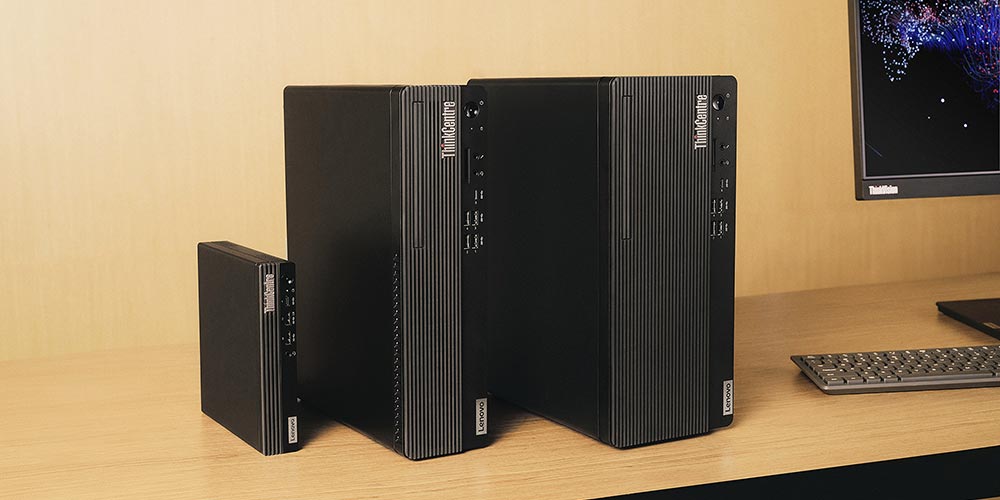You can also find out more about us on our website. Embedded World Qualcomm made an important IoT announcement last week about a platform with AI capabilities for home use and industrial application. A briefing was held on Qualcomm Connect about service-defined WiFi.
These announcements are a major effort to correct the train wrecks smart homes and buildings have been.
Let’s talk about that this week. We’ll end with my Product for the Week, a new AI ready desktop computer from Lenovo built on the AMD Ryzen 8000 platform. A lot of AI-ready stuff is coming.
Smart Home Technology: Challenges and Opportunities
I have been following smart-home technology since the 70s. When I first became excited about X10, I replaced the light switches throughout my apartment with X10 equivalents.
The X10 turntable I owned back then was also pretty cool, when it worked. You could choose individual tracks to play and a stack records. The X10 system was not as good as it could have been, and the technology itself was questionable at best.
Over the years I have tried many platforms from different vendors. interoperateIt can be more expensive and cause frustration than it is worth. Recently, a company came out to bid on replacing my Insteon with something more modern. This bid came in at $45,000 which was way over my modest budget. I chose to not buy the expensive solution as it would also be outdated in a couple of years.
Standards have improved and we are moving towards AI. Standards have made progress. Google Matter Standard has attracted a lot of attention. Amazon Alexa has also been surprising good about embracing third party platforms and allowing for voice control of the products that it will connect with. Updates and patches on connected systems can often cause them to not work for a long time or even at all.
The need is for a higher level of hardware standardization to reduce the complex nature that makes hardware that should be simple-to use, difficult. This is why most people haven’t adopted this technology.
The Service-Defined Wi-Fi Standard by Qualcomm
Qualcomm developed the solution, called “Qualcomm X-Stream”, in conjunction with British Telecom Comcast and other large cable companies. Service Defined Wi-Fi These internet service providers can offer a service which will integrate your smart home devices into a single central control, accessible at home and away.
You’d log into a user portal to see and control your smart home switches, plugs, appliances, security cameras, TVs, lighting, HVAC system, and other connected devices — like your electric car, for instance — and access and control those devices from any connected PC or smartphone while at home or when you are remote.
A service provider’s approach has the advantage that you can call them for help, but they also provide technicians to troubleshoot problems on site or remotely. This is a much better option than DIY, which most solutions today require.
This only addresses a part of the issue.
Qualcomm’s AI Ready IoT Platform
Last Week, Qualcomm announced These new edge devices, which include micro-power Wi-Fi chips and embedded AI platforms, could provide a much more consistent user experience when paired with Service Defined Wi-Fi.
Qualcomm, along with 35 other companies at Embedded World 2018, is bringing a solution to the market that will allow for a much easier and cheaper process of creating next-generation IoT-based smart building solutions.
The hardware announced today uses up to 88% lower power than previous generations, and the most advanced wireless technology currently available. This includes the Qualcomm Wireless Technology. QCC730 Platform for Wi-Fi connectivity in the IoT. These features enable IoT devices to be powered by batteries rather than AC power. Installation and service costs are therefore significantly reduced.
These modules can be used to improve security cameras and lessen your worries about porch pirates and pet pirates. They could also reduce the number of burglars who are flying into your country from abroad. The result will be a system that is more comprehensive to manage your house, when you are home and even when you aren’t.
AI for Smarter Home Automation
When we have Service Defined WiFi, Google Matter and Qualcomm’s AI ready platform, it will be possible to use a cloud or on-premises AI to automate the management of your home or office.
The components will automatically activate the lights and camera if anyone enters your home or business. The components will also activate the lights and provide voice guidance in case of a disaster, fire or burglary. This helps you and your family to get out of harm’s way as quickly as possible.
The system offers a comprehensive AI-driven security and safety solution, with a single user interface. It closes the electric shutters automatically before severe weather strikes and alerts you when a pet is about escape the yard. This helps to avoid potential hassles and long searches.
Better protection against package theft and burglary. kids with too little sense and too much timeSmart homes are designed to protect your home and pets from wild animals, theft of pets or their escape.
AI is icing on the cake of IoT, and Qualcomm products and services are critical in making this work.
Wrapping Up
Smart buildings and homes have disappointed many people. They promised much but delivered very little when it comes to an integrated, easy-to-use offering.
Smart homes will be enhanced if you work with a cable company or telephony provider that uses Qualcomm’s Service Defined Wi Fi concept and forces IoT to use Qualcomm hardware solutions. Google Matter’s success and advancements further enhance this potential.
The incorporation of a new class AI solutions that are increasingly capable can provide autonomous control, and better ensure the outcomes initially promised by smart home in the 1970s. It took me a little while to realize what was required to make the smart home promise come true.
Lenovo ThinkCentre Family of Desktops M75
The AI PC has received a lot attention in recent months, but the focus has been on laptops, leaving desktop users out. This changed last week when the announcement Lenovo’s ThinkCentre desktop computers, which feature AMD Ryzen PRO desktop processors.
The ThinkCentre M75 Gen 5 Compact PCs are the first desktops with NPUs. They will be able to perform up to 16 TOPS, or trillion operations per seconds. This is comparable with the AI PC Laptops on the market.
Three basic configurations are available:
- ThinkCentre Mini M75q
- ThinkCentre Gen 5 M75s Small Form Factor
- ThinkCentre M75t Gen5 tower
ThinkCentre M75 Gen 5 Desktops are powered by AI to deliver outstanding performance. (Image Credit: Lenovo)
The tower configuration is available with either the AMD Radeon RX 560 4G or AMD Radeon RX 7600LE graphics card.
M75t will not be available until May in North America. M75s is expected to arrive in June at an affordable price of $749.
The products have a green appearance because they are made from recycled materials, including the packaging and shipping carton.
The ThinkCentre M75 family of desktops is my Product of the Week.












